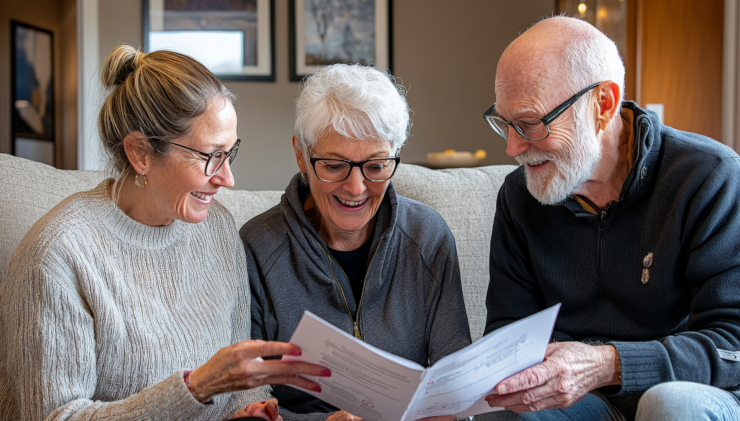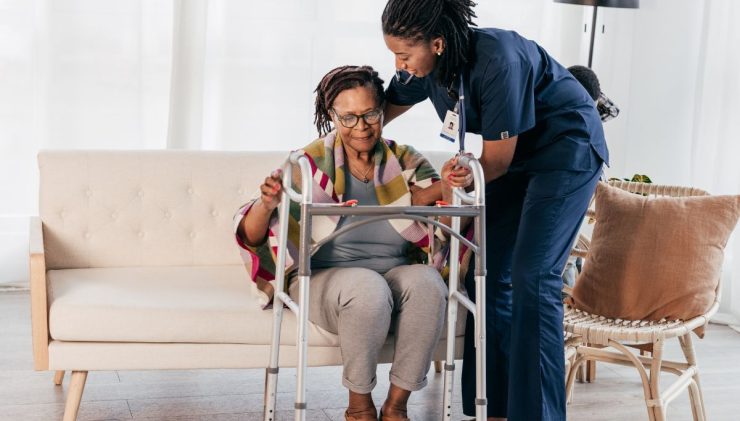 Why Home Care Agencies Need a Safety Plan
Why Home Care Agencies Need a Safety PlanThe COVID-19 pandemic has proven devastating for many homecare, hospice, and assisted living facilities. Thanks to the vaccine rollout, the situation is improving in the United States. However, virus variants, as well as new viruses that might emerge in the future, mean that there are still risks.
The last year should be a wake-up call. Businesses in the healthcare sector should act now to protect themselves against the next pandemic.
COVID’s Toll
Assisted living facilities, where vulnerable individuals live in close proximity, are especially susceptible to viral outbreaks.
The COVID Tracking Project from The Atlantic has tracked COVID-19 deaths in nursing homes, assisted living facilities, and other long-term care facilities. According to their analysis, long-term care facility deaths have accounted for more than a third of all U.S. deaths. Approximately 8% of people who live in U.S. long-term care facilities have died of COVID-19.
Home healthcare has also been impacted. Although the vulnerable patients do not live in close proximity, there is a risk that the home healthcare provider could spread illness from patient to patient. This concern has also prompted many people to avoid or delay care. In June 2020, Home Health Care News reported that 92% of home health agencies reported reduced revenue because of the pandemic.
The Vaccine Rollout
Three vaccines have received FDA Emergency Use Authorization in the U.S. Vaccinating residents and staff at assisted living facilities has been a priority – but some people have refused vaccination.
This can lead to outbreaks. According to Courier Journal, an unvaccinated worker started a COVID outbreak at a nursing home in Kentucky. Three residents died and 46 people were infected.
Vaccination is an important part of reducing risk. The EEOC says that employers are allowed to ask about vaccination status under the ADA. If an employee says they cannot be vaccinated due to disability or religious reasons, the employer may exclude the employee from the workplace if it can be shown that the unvaccinated employee poses a direct threat that cannot be eliminated using reasonable accommodations.
Adequate Staffing
Having enough workers to provide care is essential at all times, but it’s especially important when patients are experiencing illness.
During the pandemic many nursing homes struggled with a shortage of workers, according to the Pew Charitable Trusts. As a result, some states have passed new laws to establish a reasonable level of care. In New Jersey and Massachusetts, for example, new regulations will create minimum staff-to-resident ratios.
Personal Protective Equipment
Personal protective equipment, including masks and gloves, could help keep residents safe. Unfortunately, many healthcare providers lacked the necessary supplies.
According to a report from U.S. PIRG, 20% of nursing home facilities had PPE shortages seven months into the pandemic. Nearly half of all nursing homes admitted they didn’t have a one-week supply of at least one type of PPE at some point between May and August of 2020.
The PPE shortages demonstrated that healthcare facilities need to make sure they’ll have enough PPE supplies for the next pandemic.
Working While Sick
During the pandemic, many healthcare facilities restricted visitors to help prevent the spread of COVID. Unfortunately, if workers were allowed or even encouraged to show up to work while sick, patients would still be exposed.
OSHA has recommended screening workers and residents for illness and instructing sick workers to stay home. However, it’s clear that many workers show up to work even when they know they’re sick. In some cases, this is because they lack paid sick days and can’t afford to take time off. Some workers may also feel pressured to show up to avoid being fired.
When employees go to work sick, they can spread illness. When healthcare workers go to work sick, the consequences can be devastating. Assisted living facilities and other healthcare employers must create a workplace culture in which employees feel comfortable staying home when they are sick.
Looking Forward
While there are no clear-cut solutions for many of these challenges, there are a few steps that homecare, hospice and assisted living businesses can take to be more prepared for the future.
- Review your commercial insurance and make sure you have the correct protections in place for workers’ compensation, liability, property, and business interruption exposures. Look for an insurance partner that helps you control risk year-round with robust loss prevention education and training.
- Review and update your employment policies and handbooks to make sure your policies support your position on vaccinations, working while sick, and other unexpected employment issues that arose during the pandemic.
- Review and update your patient/family contracts to address any lessons learned and exposure revealed during the pandemic.
- Expand PPE resources. We’ve all seen how the supply chain can break down. One way to protect your company is to develop relationships with multiple PPE providers, so if one source fails, you always have a backup plan.
- If you own your commercial property, check your property insurance limits. With skyrocketing property values, many building owners are presently underinsured.
As always, the Heffernan Insurance Brokers team is here to help. Please speak with our health care providers insurance division for any questions you may have. Contact us today!



